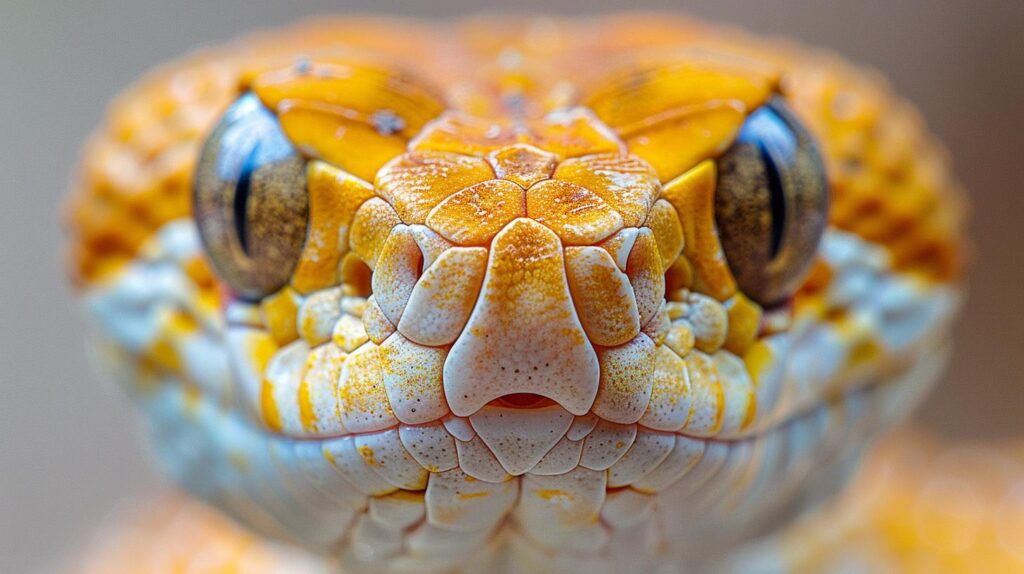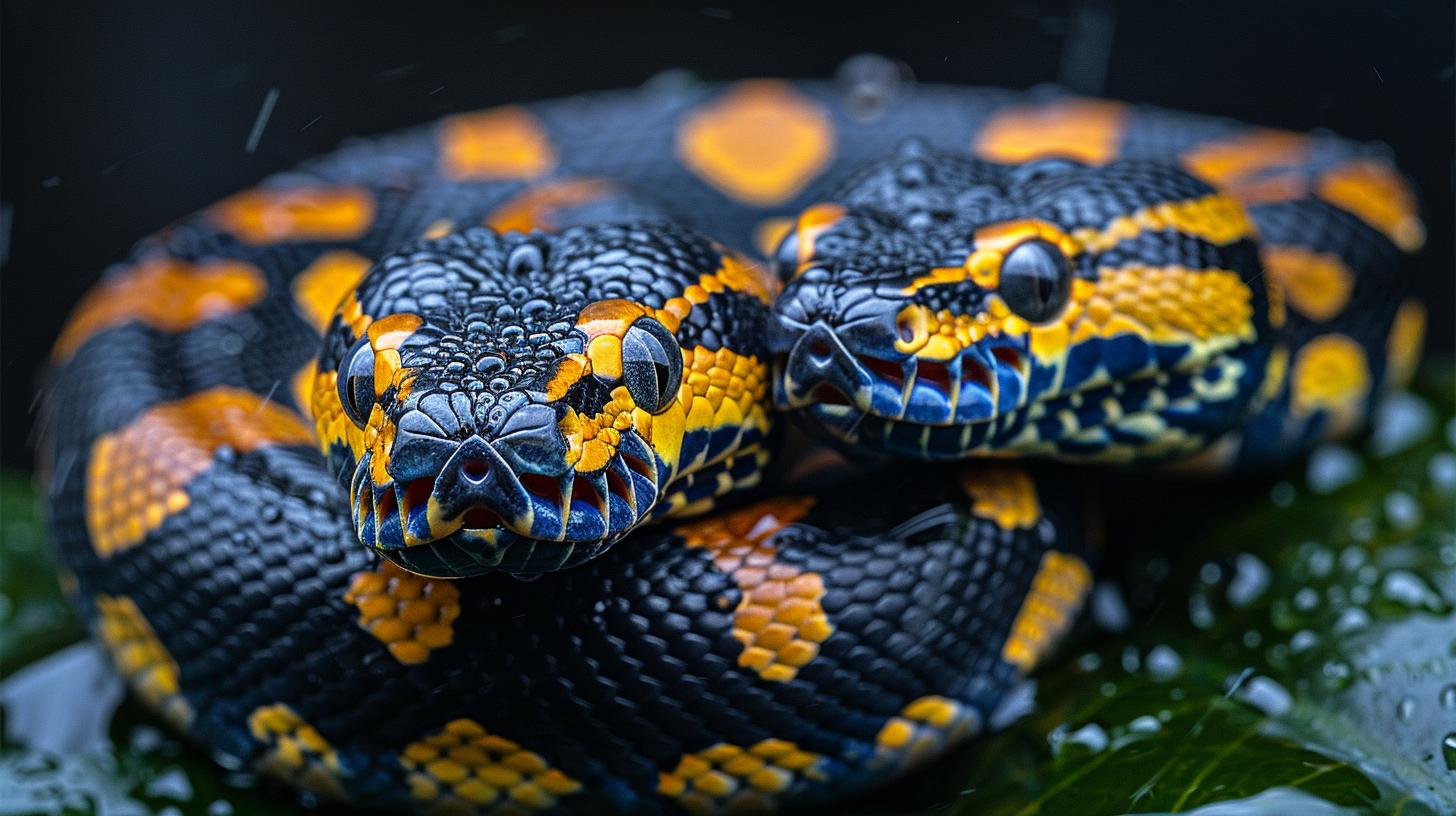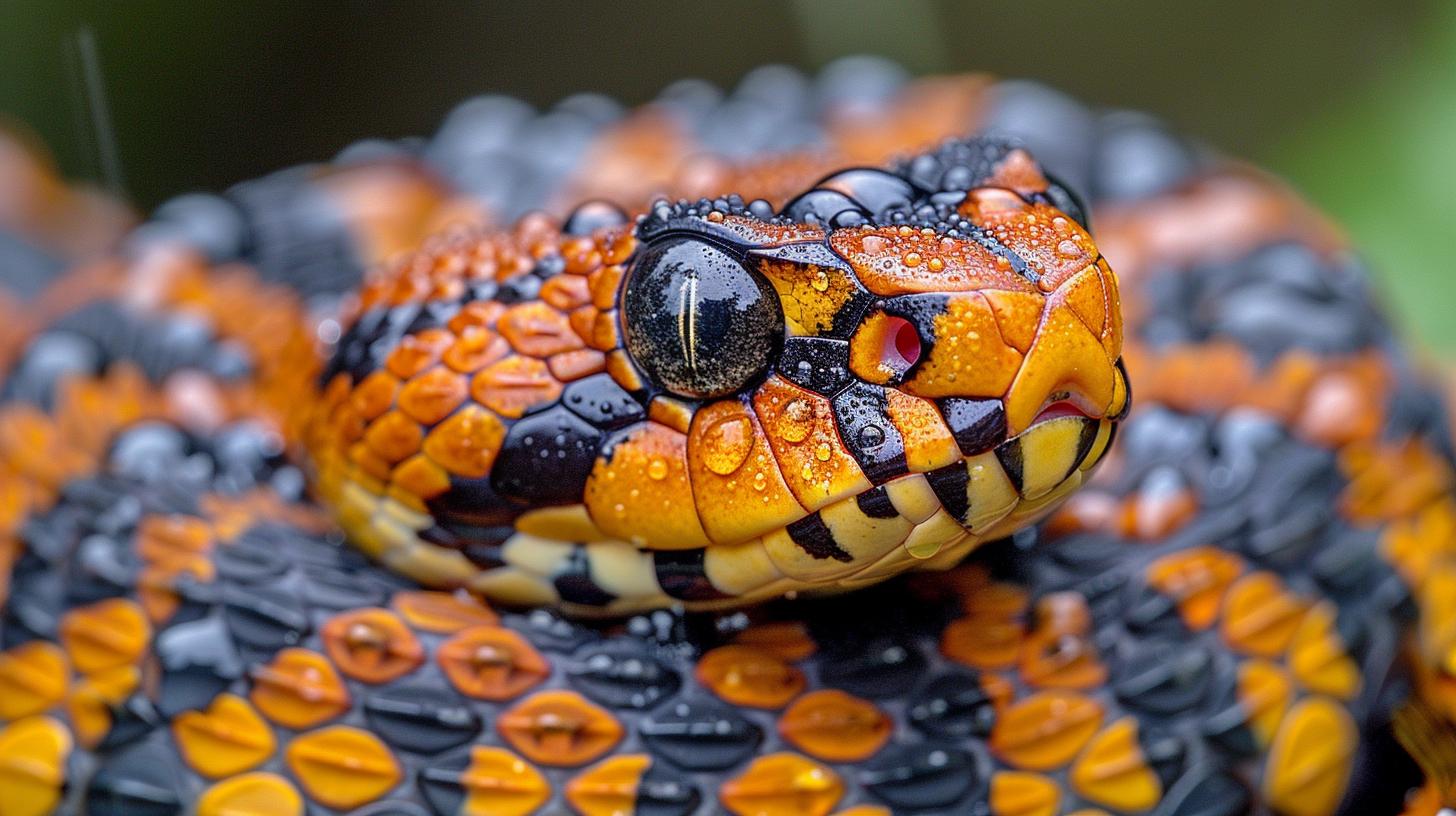Top Treatments for Snakes With Respiratory Infections

Understanding Respiratory Infections in Snakes
When it comes to respiratory infections in snakes, the health implications can be significant, making early detection and treatment crucial for their recovery. These infections, if left untreated, can lead to severe health issues or even be fatal.
Recognizing the signs of a respiratory infection, such as wheezing, excess mucus production, and difficulty breathing is the first step towards ensuring your snake receives the care it needs. This article delves into what respiratory infections entail for these reptiles and outlines essential steps owners can take to mitigate these conditions.
Respiratory infections affect snakes similarly to how they impact other animals but come with unique challenges due to their distinct biology and living conditions. Infections often manifest through noticeable symptoms, including lethargy, loss of appetite, and an unusual mouth opening behavior known as "gaping."
These signs are indicative of discomfort and should prompt immediate action from the owner. Understanding that these health issues do not merely cause temporary discomfort but could also pose significant long-term risks emphasizes the necessity for prompt and effective intervention.
The underlying causes of respiratory infections in snakes are numerous but frequently stem from environmental factors such as inadequate temperature regulation, excessive humidity, or exposure to infectious agents. Creating a living space that mirrors a snake's natural habitat is fundamental in preventing these sicknesses.
Moreover, recognizing the role of stress in exacerbating health issues becomes evident when dealing with captive snakes; thus stressing the importance of a calm environment alongside optimal physical conditions. Through identifying these causes and implementing preventive measures, owners can significantly reduce their snake's risk of developing respiratory complications.
Causes of Respiratory Infections in Snakes
| Cause | Impact on Snakes |
|---|---|
| Improper Temperature | Weakens immune response, making snakes more susceptible to infections. |
| High Humidity | Promotes the growth of fungal and bacterial pathogens. |
| Exposure to Infectious Agents | Directly leads to respiratory infections snakes can contract. |
Understanding the root causes of *respiratory infections snakes* experience is key in not only treating them but also preventing future incidents. One primary culprit is improper temperature. Snakes are ectothermic animals, relying heavily on external sources of heat to regulate their body temperature.
When kept in environments that do not mimic their natural habitat's temperature range, it can severely impact their immune system. This weakened state makes them more prone to developing respiratory infections, underscoring the importance of a controlled and suitable thermal environment within their enclosures.
Moreover, humidity levels play a significant role. Both excessively high and drastically low humidity can distress snakes, with the former being particularly problematic as it creates an ideal breeding ground for fungal and bacterial pathogens responsible for respiratory conditions. Ensuring the humidity within a snake's habitat is balanced is crucial for maintaining their respiratory health. Regular monitoring and adjustments based on species-specific requirements reduce the risk of creating conditions conducive to infections.
Finally, exposure to infectious agents due to unsanitary conditions or contact with other infected animals can directly lead to respiratory ailments. It highlights the significance of maintaining clean living spaces for snakes and isolating new or sick individuals from healthy ones until vet clearance is obtained.
In conclusion, preventive measures focusing on environmental management form the linchpin in safeguarding snakes against respiratory infections-an effort requiring attentiveness and commitment from the snake owners or caregivers. This approach forms a solid basis for ensuring the wellness and longevity of these remarkable reptiles without immediately concluding their care narrative, prompting further exploration into treatment options and recovery strategies in subsequent sections.
Seeking Professional Help
In the realm of reptile care, understanding when and how to seek professional help is paramount, particularly when dealing with respiratory infections in snakes. The onset of a respiratory infection can often present subtly but progress rapidly, making prompt and effective intervention crucial. Owners may first notice signs such as labored breathing or unusual mouth movements that signal distress.
As these infections can stem from a variety of sources-bacterial, viral, or even fungal-it's vital to identify the cause accurately to administer proper treatment. This complexity underscores why consulting a veterinarian specialized in reptile health is not just beneficial but necessary.
Identifying the Need for Professional Help
The need for professional assistance becomes apparent once any symptoms associated with respiratory infections snakes manifest. Recognizing these signs early on allows for timely veterinary intervention, which can significantly improve the outcome for the infected snake.
Respiratory issues generally do not resolve on their own and delaying professional consultation could lead to severe complications or even fatality. A specialized veterinarian will perform a thorough examination, potentially including diagnostic tests like radiographs (X-rays) or laboratory analysis of fluid samples, to determine the exact nature and severity of the infection.
The Role of Specialized Veterinarians
A veterinarian with expertise in reptiles plays an invaluable role in diagnosing and treating respiratory infections in snakes. Their specialized training enables them to understand the unique physiological needs of snakes, making them adept at identifying subtle signs of illness that might be missed by general practitioners.

Following diagnosis, they create a tailored treatment plan that may include antibiotics for bacterial infections-the most common cause-or other medications depending on the root cause identified through diagnostics. It's important for snake owners to adhere strictly to prescribed treatments and follow-up appointments as recommended by their vet.
Seeking professional help at the right time ensures that your snake receives accurate diagnosis and appropriate treatment-key factors in overcoming *respiratory infections*. Engaging with a vet who specializes in reptiles not only helps address the immediate health issue but also contributes to your ongoing education on providing optimal care for your snake's unique needs.
This partnership between knowledgeable owners and skilled veterinarians is fundamental in navigating through health challenges like respiratory infections towards achieving long-term well-being for these fascinating pets.
Antibiotic Treatment
When it comes to treating respiratory infections in snakes, the administration of antibiotics stands out as a primary and effective strategy. This approach targets bacterial causes of respiratory infections, aiming to eradicate the infection and relieve the snake of its symptoms. The process begins with a thorough assessment by a veterinarian skilled in reptile health, who will prescribe the appropriate antibiotic based on the infection's severity and the specific needs of your snake.
Administering antibiotics to snakes typically takes one of two forms: injections or oral medications. Injections are often favored for their ability to deliver medication directly into the bloodstream, offering quicker results. However, they require precise dosing and handling skills, usually necessitating frequent visits to the vet or a trained professional's assistance at home. On the other hand, oral medications might seem less invasive but ensuring that your snake consumes the full dose can be challenging.
To support effective treatment through antibiotics, owners must adhere to several important guidelines:
- Follow the vet's prescription meticulously, understanding that deviating from the prescribed dose or schedule can compromise recovery.
- Maintain optimal conditions within your snake's habitat, as stress from environmental factors can affect a snake's response to treatment.
- Monitor your pet closely for side effects or signs of improvement and communicate these observations with your vet.
In summary, while dealing with *respiratory infections snakes* endure can be distressing for both the pet and its owner, a systematic approach involving professional diagnosis followed by an accurate antibiotic regimen is pivotal in facilitating recovery. This method underscores not just tackling immediate health concerns but also emphasizes maintaining regular communication with your vet throughout treatment-ensuring that adjustments can be made as necessary without delay.
Moving forward into comprehensive care strategies beyond initial medical intervention becomes a critical step in not only addressing current health issues but preventing future occurrences as well.
Supportive Care at Home
When dealing with respiratory infections in snakes, supportive care at home becomes an indispensable part of the recovery process. The environment in which a snake resides plays a pivotal role in both the prevention and healing phases of respiratory diseases. Correctly managing the habitat's conditions can significantly enhance your pet's ability to overcome an infection. This segment delves into essential tips for providing the best supportive care at home, ensuring a conducive atmosphere for recuperation.
Optimal Habitat Conditions
Maintaining optimal temperature and humidity levels within your snake's enclosure is crucial for its recovery from respiratory issues. For most species, a slight elevation in the ambient temperature can help boost their immune response, aiding in quicker recovery.
However, it's vital to avoid overheating or creating excessively dry conditions, as this could exacerbate breathing difficulties. Investing in reliable thermometers and hygrometers will allow you to monitor these environmental parameters closely, adjusting them as necessary to meet your pet's specific needs.
Ensuring Proper Hydration
Hydration is key when nurturing a snake back to health from any ailment, especially respiratory infections A dehydrated snake may struggle more severely with mucus production and elimination, worsening symptoms like wheezing or congestion. Offer fresh water daily and consider gently misting your pet or its surroundings to encourage hydration through both drinking and skin absorption. Additionally, maintaining cleanliness within the water bowl is paramount to prevent further exposure to potential pathogens.
Minimizing Stress Factors
Stress is a known immunosuppressant in reptiles; thus minimizing stressors is essential during the recovery period for snakes battling respiratory infections. Handling should be kept to an absolute minimum-only when absolutely necessary for treatment purposes-since excessive handling can elevate stress levels. Conversely, providing adequate hideouts and ensuring minimal disturbance will create a serene environment that encourages healing. Keeping noise levels down and reducing foot traffic around the enclosure will also contribute positively to this end.
Understanding how to apply these supportive care strategies at home complements medical treatments prescribed by professionals. Creating an optimal living environment not only aids in combating current respiratory infections snakes might face but also works towards fortifying your pet against future ailments by bolstering its overall health resilience.

Advanced Treatments
When initial interventions for respiratory infections snakes encounter prove ineffective, veterinarians may suggest exploring more advanced treatments. These are particularly considered in cases where the infection is severe or has not responded to conventional antibiotic therapy. Among these sophisticated options, nebulization therapy and surgical procedures stand out for their potential to address complex respiratory issues.
Nebulization therapy, a method used to administer medication directly into the lungs through mist inhalation, has shown promising results in treating respiratory infections in snakes. This procedure allows for the medication to penetrate deeply into the respiratory system, targeting the infection more effectively than traditional methods. It's vital, however, for snake owners to understand that this treatment should only be carried out under professional supervision since it requires specialized equipment and expertise. The process typically involves:
- Regular sessions over a prescribed period.
- Close monitoring of the snake's response to treatment.
- Adjustments to medication dosage as necessary based on vet recommendations.
In instances where respiratory infections are accompanied by physical anomalies or blockages, surgical intervention may be necessary. Surgeries might involve removing obstructions or infected tissue from the animal's respiratory tract. While surgery represents a more invasive option, it can be lifesaving for snakes suffering from certain conditions that cannot be resolved through medication alone.
It is essential for snake owners looking into advanced treatments like nebulization therapy or surgery to have open and detailed discussions with their vets. Understanding the benefits, risks, and required post-treatment care is crucial for ensuring the best possible outcome. Continuing from here, maintaining an environment conducive to healing and preventing future illness will aid significantly in your snake's recovery journey and ongoing health.
Moving forward after exploring these advanced treatments mandates a closer look at preventive measures and lifestyle adjustments needed to safeguard your reptile friend against recurrent or potentially new respiratory challenges.
Preventing Future Respiratory Infections
In wrapping up this discussion on treatments for snakes with respiratory infections, we've journeyed through the intricacies of identifying, treating, and ultimately preventing these conditions. Knowledge is power, particularly when it comes to ensuring the health and longevity of our reptilian companions.
Respiratory infections in snakes can be a serious matter, but with the correct approach to care and treatment, recovery is more than just a possibility-it becomes a probable outcome. The emphasis on early detection cannot be overstated; recognizing symptoms like wheezing, excess mucus, and difficulty breathing early on paves the way for timely intervention.
Turning our attention towards prevention, creating an environment that mimics a snake's natural habitat as closely as possible is paramount. This includes managing temperature and humidity levels effectively to prevent the onset of respiratory infections. Engaging with a vet specialized in reptiles at the first sign of illness ensures that your pet receives a tailored treatment plan.
Whether it's administering antibiotics correctly or employing advanced treatments for more severe cases, professional guidance is invaluable. Beyond cure, however, lies the realm of care-supportive measures at home significantly contribute to a snake's recovery process.
Encouraging vibrant health in your pet snake doesn't end here. Dive deeper into our website for more insightful articles filled with expertise on reptile care. Our goal is not only to guide you through moments of concern but also to foster enriching experiences between you and your pet.
From optimal habitat setups to nutritional advice-discover how to craft an enriching life for your scale-covered companion today and every day following. Let's journey together towards healthier, happier pets-one click at a time.
Frequently Asked Questions
How Do You Treat a Respiratory Infection in Snakes?
Treating a respiratory infection in snakes usually involves improving their habitat conditions, such as increasing the enclosure's temperature and ensuring proper humidity levels to help alleviate breathing difficulties. Most importantly, a veterinarian specialized in reptiles may prescribe antibiotics to combat the infection. Prompt action is critical to prevent the condition from worsening.
Are Respiratory Infections Common in Snakes?
Respiratory infections are relatively common in snakes, primarily due to improper environmental conditions within their enclosures such as incorrect temperatures or humidity levels. Stress and nutritional deficiencies can also increase their susceptibility to these infections.
Is Snake Respiratory Infection Contagious to Humans?
Snake respiratory infections are not contagious to humans. These infections are caused by bacteria or viruses that specifically affect reptiles and cannot be transmitted to human caregivers. However, maintaining good hygiene while handling snakes is always advisable.
What Are the Symptoms of Crypto in Snakes?
The symptoms of crypto, short for Cryptosporidiosis in snakes, include regurgitation of food, weight loss despite regular feeding, dehydration, lethargy, and abnormal swelling in the abdomen. It is a serious condition that requires veterinary attention as it directly affects the snake's digestive system.
Can I Treat a Snake Respiratory Infection at Home?
While minor adjustments at home can support a snake recovering from a respiratory infection, such as modifying habitat conditions, professional veterinary care is crucial for accurate diagnosis and treatment plan including antibiotics if needed. Home remedies alone are not sufficient for treating respiratory infections in snakes.
What Causes Respiratory Infections in Snakes?
Respiratory infections in snakes can be triggered by several factors including but not limited to poor enclosure conditions like inadequate heat or improper humidity levels, exposure to drafts or cold temperatures for extended periods, stress from overcrowding or aggressive cage mates, and underlying health issues weakening their immune system.
Ensuring a clean and well-maintained habitat with the correct environmental parameters is key to preventing these infections.
Leave a Reply
You must be logged in to post a comment.